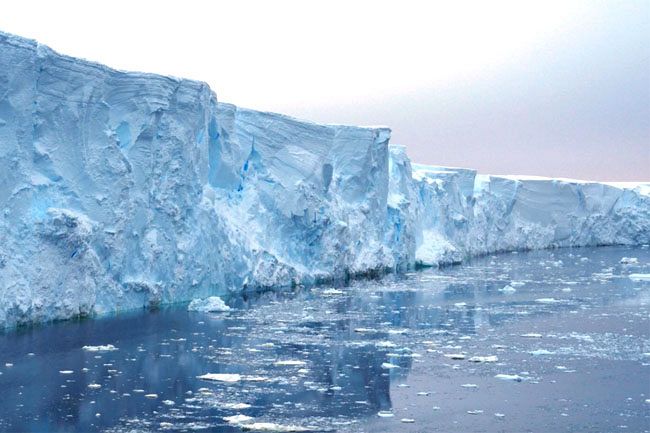Scientists have detected a mass gain in Antarctica's ice sheet, but it's not quite the climate victory we've been hoping for, writes Vince Hooper.
FOR DECADES, the story from Antarctica has been bleak: relentless ice loss, glaciers retreating and a continent that once seemed untouchable, now a key driver of rising seas threatening Australia’s coasts. But in a rare twist, satellite data from 2021 to 2023 revealed something no one expected.
Antarctica’s ice sheet, especially in East Antarctica, actually gained mass enough to slow the rise of the global sea level briefly. Should Australians take comfort? Not quite.
A rare reprieve, not a reversal
Between 2011 and 2020, Antarctica was hemorrhaging ice at an average of 142 gigatons per year, a trend that had been accelerating and pushing sea levels higher. Then, seemingly out of nowhere, came a net gain of about 108 gigatons per year from 2021 to 2023, trimming global sea level rise by a modest 0.3 mm annually.
The turnaround was most dramatic in four East Antarctic glacier basins – Totten, Denman, Moscow University and Vincennes Bay – previously among the continent’s fastest losers.
What changed? Not the climate, but the weather. A spike in snowfall, driven by unusual atmospheric and oceanic patterns, dumped enough snow to tip the balance, at least for now. This is not evidence of a cooling trend or a broader recovery, but a blip caused by short-term climate variability.
The climate drivers: Australia’s weather, Antarctica’s fate
Australians are no strangers to the whims of El Niño and the Southern Annular Mode (SAM) climate drivers that shape our droughts, floods and bushfires. It turns out these same forces are also behind Antarctica’s recent ice drama.
When El Niño Southern Oscillation (ENSO) shifts, the impacts ripple south, sometimes months later, altering snowfall and melt patterns on the ice sheet. The SAM, now in its most positive phase in a millennium (thanks in part to human-driven greenhouse gases), changes wind and moisture flows between Australia and Antarctica, with profound effects on both continents.
Further research shows that these drivers can cause dramatic year-to-year swings in Antarctic ice, but the long-term trend remains downward. A sizeable part of the ice sheet’s mass change over the past two decades is linked to persistent shifts in the SAM, underscoring the deep connection between Australia’s climate and the fate of our southern neighbour.
Why this matters for Australia
Australia is uniquely exposed to sea level rise. Our major cities hug the coast and even small changes in Antarctic ice can have outsized impacts here. The recent ice gain offers only a temporary reprieve. The Antarctic ice sheet still holds enough water to raise global sea levels by about 58 metres if it were to melt entirely — a distant but sobering prospect. Even with this short-term anomaly, the long-term outlook remains grim: continued net ice loss and accelerating sea level rise.
The takeaway: Vigilance, not complacency
This Antarctic anomaly is a scientific curiosity, not a climate victory. It highlights how much we still must learn about the complex interplay of ocean, atmosphere and ice, especially in a warming world where surprises are becoming more common. For Australia, it’s a reminder that our future is tied to what happens in Antarctica, and that climate action at home and abroad remains urgent.
As Professor Matt King from the University of Tasmania puts it:
“Antarctica continues to lose mass into the oceans at an alarming rate. But we now know more about what is driving both the trend and its shorter-term bumps and wiggles.”
So, while this rare ice gain is worth noting, it’s no reason for Australians to breathe easy. The underlying forces of climate change are still at work and the next anomaly may not be so kind.

In short, Australia’s coastal future still depends on what happens in Antarctica, and this short-lived ice gain is a reminder of both the complexity and urgency of the climate challenge we face. So, while Antarctica's icy surprise might seem like nature's way of saying “Just kidding”, let's not be lulled into a false sense of security. After all, when it comes to climate change, the only thing we can predict is its unpredictability.
Vince Hooper is a proud Australian/British citizen who is professor of finance and discipline head at SP Jain School of Global Management with campuses in London, Dubai, Mumbai, Singapore and Sydney.
 This work is licensed under a Creative Commons Attribution-NonCommercial-NoDerivs 3.0 Australia License
This work is licensed under a Creative Commons Attribution-NonCommercial-NoDerivs 3.0 Australia License
Support independent journalism Subscribe to IA.














